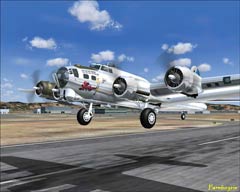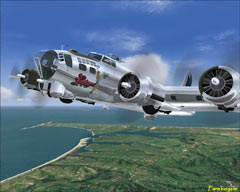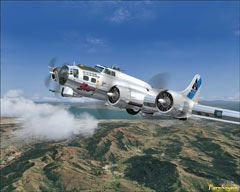

www.farmboyzimsflightsims.com
FBZFS
Thanks For The Visit !


A shiny piece of history flew into the skies of Santa Rosa, California this past Monday, the 14th. The Arizona Wing of the Commemorative Air Force is on tour with their beautifully restored Boeing B17G, Flying Fortress. Farmgirlzim pointed out a small blurb in the Sunday newspaper, stating that "Sentimental Journey" would be landing around noon on Monday, and then open its hatches for a walk through of the classic WW II bomber.
The pictures in this article are the one's I snapped with my little digital camera, but more are on the way as soon as they are developed. Yeah, I know...Living in the dark ages with 35mm film! LOL!
The weather was perfect, not a cloud in the sky, and a slight breeze from the southwest on this particular day. Only 25 or so people showed up for the fly-in of the B17G, but that was probably due to it being a Monday. A couple of the old-timers in the crowd had served on B-17's during the war, and I had overheard one fellow state that he hadn't been in one in over 60 plus years. I noticed that he had a big old grin on his face as he climbed up into the aircraft. I realized too, that I also had a big grin on my mug as well!
"Sentimental Journey" is said to be one of the finest restored Boeing B-17's to be flying today, 72 years after Boeing rolled out the first model, designated Boeing 299, aka XB-17. When this aircraft rolled out for the first time, an observer quipped that it was a "regular fortress, a fortress with wings!", and so the name stuck.
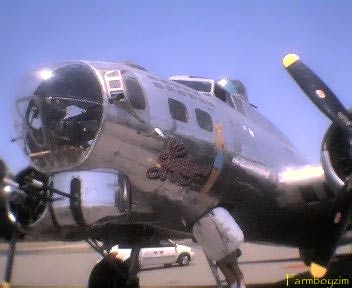
Before I clue you in on who these folks are at the Arizona Wing of the Commemorative Air Force, who are the one's to credit for the restoration of "Sentimental Journey", let me tell you about the B17 Flying Fortress. Although, if you're an aviation nut like me, odds are pretty good you already know this bird, but just in case, here's a brief history of this classic WWII bomber...
Back in 1934, the U.S. Army Air Corps sparked a revolutionary idea in the design of bombers by requesting a "battleship of the skies". On their "wish-list" was the need for a bomber that would be fast, with a max speed of at least 200 - 250 mph at an altitude of 10,000 feet, an operating speed of 170 - 200 mph at that same altitude, able to stay aloft for 6 to 8 hours and have a service ceiling of 20,000 - 25,000 feet. Undaunted by these requests, Boeing designers already knew that they could meet these demands with their current state of aviation technology, with only a twin-engine configuration, but that wouldnít be very much different than what their competitors were going to bring to the table. Wanting a design that would propel them far beyond what the other guy was developing, they poured themselves a fresh cup of coffee and sat down to think. A four-engine bomber was the ticket, and in the year 1935, at the Boeing plant in Seattle, Washington,
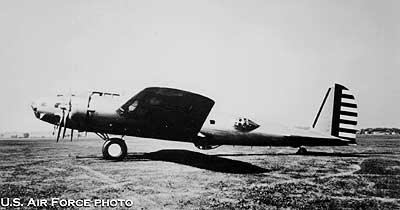
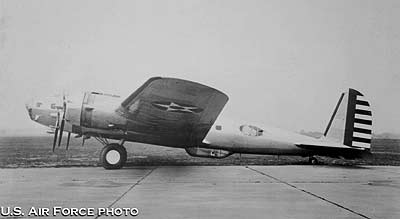
out rolled the "Flying Fortress". This first model of the B-17 went beyond what the Air Force had requested, setting range and speed records. The B-17C had been developed and was hitting the skies just as Hitler was beginning his invasion of the Low Countries. The "C" model had improved armor plating for its crew and beefed up engines. For the most part, the "B" and "C" models also looked the same. With intelligence flowing in as to the capabilities of the Axis air power, the venerable Fortress
B-17C
B-17B
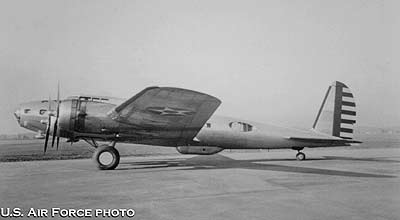
B-17D
went through more changes. This time around self sealing fuel tanks, improved armament, and modifications to the engines that resulted in an increase of speed to 300 mph. Air combat was still a concept in development, with changes in tactics and technology happening at an incredible pace. The Allies were in the dark as to just how tough the action was going to be in the skies over Europe, so that armament in the "C" and "D" models was still relatively
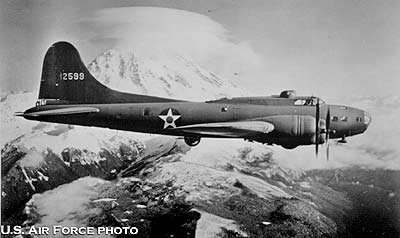
light, although it did have more of a sting to it than most. The "C" and "D" variations were the first of the line of B-17's to see combat. B-17E's were introduced shortly thereafter with a redesigned tail, and were faster and could take even more abuse that would be thrown at. Fifty caliber waist and tail guns, and turrets both above and below the aircraft were added to throw more lead downrange. When you thought things couldn't get any better, when the spring of 1942 rolled around, so did the B-17F. Once again, range and armament were improved as well as an increased bomb load.
B-17E
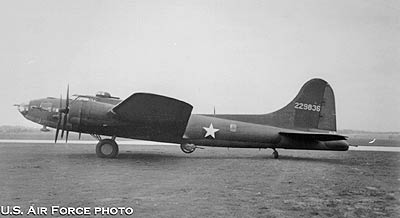
Hold the assembly lines! Time for one more major update of the Fortress! The B-17G entered combat in September of 1943 with modifications that could only be learned of while performing in combat.
B-17F
"Sentimental Journey"
Boeing B-17G
From the Arizona Wing of the Commemorative Air Force
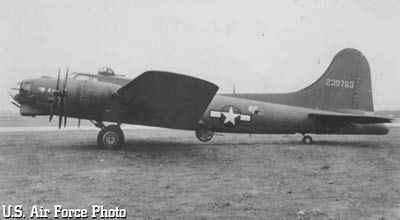
B-17G
During aerial combat, the Axis pilots realized that frontal attacks on the B-17's proved to offer the least amount of defensive fire, and so, accordingly, they adjusted their tactics to exploit this weakness. Enter the remote-powered chin turret, which was manned by the bombardier. I bet this was a surprise for the first one's to attack the "G" model! Tracer fire coming out the nose straight at you could put a damper on the dayís plans! Other improvements to the "G" model were higher profile top turrets, which allowed the gunner a better field of view. To give the waist gunners a bit more room to maneuver, the waist gun hatches were staggered. If you have ever had the opportunity to go through a B-17, you will realize that this was probably a very much appreciated upgrade, as, contrary to what most folks may think, there was not a whole lot of room in these bombers. The hatches were also covered in Plexiglas, as well as the radiomanís hatch, to protect the crew from the freezing blast of the slipstream. On the tail end of things. the new "Cheyenne" tail gun turret was incorporated. The old ring and bead site system was replaced with a reflector site. Better visibility was a key factor here also. The tail gunner was a very important position, protecting that ever vulnerable "six-o'clock".
In all, a total of 12,731 B-17's were manufactured, and of them nearly half were destroyed either in combat or accidents. About fifty of these old war birds are still around today, with about a dozen still taking to the skies.
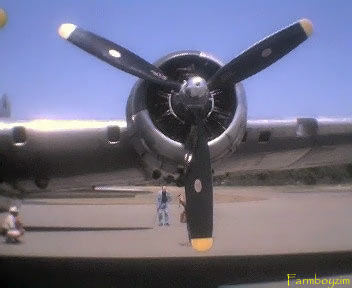
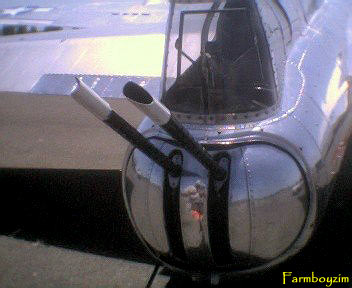
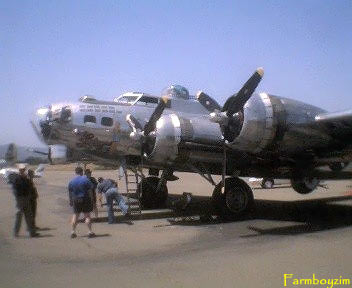
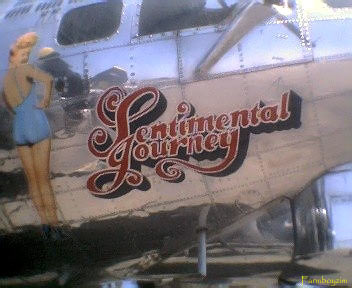
Although "Sentimental Journey" arrived too late to enter the European War, it still has an interesting history. ANY B-17 flying today MUST have an interesting history for that matter! "SJ", as we'll refer to her, rolled off the assembly lines late in 1944, and the Army Air Corps received it in March of 1945. It was assigned to the Pacific Theater of Operation for the duration of the war. For a time, "SJ" was stored in Japan, but was taken out of the moth balls for an assignment in Manila, at Clark Field in the role of photo-mapping. Three years into the photo-mapping gig, lead to a transfer to Eglin Field in Florida, where she was converted into an air-sea rescue craft. No. floats were not attached to her belly! Her next job was that of a "mother - ship", at Patrick Air Force Base, Florida. Her job here was to take over the remote control of the target drones from the ground personnel, once the drones were airborne. Final orders were cut for "SJ" in January of 1959, transferring her to military storage. A few months after this, the aircraft was bought by a civilian company, and over the years fought fires as a converted fire bomber.
In 1978, the Arizona Wing of the Commemorative Air Force to possession of the donated aircraft. The name "Sentimental Journey" was not its original handle. After the AW of the CAF took possession, a local contest was held to name the aircraft. Permission was obtained to add the most famous pin-up of WWII to the nose of the plane. Betty Grable graces the aircraft, and I might add she does it extremely well! Massive restoration efforts ensued with assistance by Boeing with
plans and pictures. The restoration was monumental, with no crack, crevice, or detail overlooked. According to the information booklet of "Sentimental Journey", the biggest problem they had was securing a top turret for the aircraft. They struck a deal with Art and Birdine Lacey, owners of the "Bomber Gas Station" in Oregon. This was not a stopover for bombers to get gassed up. It was an automobile gas station that happened to have a full size, real deal, B-17 sitting on stands, above the gas station! I remember seeing this place on one of my childhood vacations. I thought it was wild then, and I still do! This particular B-17 had a top turret that was in pretty good condition, but the rest of the aircraft was looking pretty sad. The deal entailed a trade of sprucing up the old B-17 on the stilts for the top turret. The restoration team swept in and worked their miracles on the old bird, and needless to say, the Lacey's were more than pleased! By 1986 "Sentimental Journey" was flying the skies, making about 60 stops a year across the United States and Canada. The restoration of this and other aircraft like it is an ongoing affair, and when the aircraft are back at there home bases in the off season, work continues to keep these historical aircraft looking great and flying safely, so that you and I can see and appreciate these flying works of history, and remember those that flew them.
I encourage all to go to your local Air Museums and support their efforts in keeping history alive and flying. The crew of "Sentimental Journey" offers flights for a little over $400. This may sound like a lot, and it is, but you have to figure in what it cost to get that bird off the ground. After all, you are chartering a very special aircraft! If you can't afford the price of a flight, just about all of the se exhibitions have souvenirs for sale. Buy something and do your part as an aviation nut! If you can't afford anything at all, just go see these relics. The folks that restore these aircraft probably get more satisfaction out of kind words of appreciation, than an empty hanger full of war birds with no one around to see them!
Some of the information in this article was gathered from the booklet that was sold at the showing. To show just how affordable these events are, the book was just five bucks and is 33 pages long with excellent photos and loads of interesting information.
Here's the "Sentimental Journey" that I like to fly! The model is from Wings of Power Bombers and Jets, and the repaint job for the model is done by Chuck Lawsen. I'll have more "real" pictures of "Sentimental Journey" in a few days... //Click on image for larger view...//
